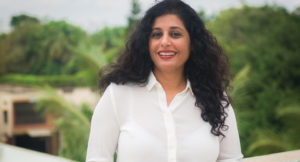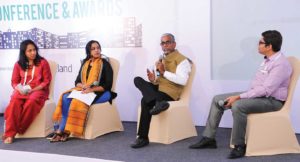Beginning with the initial idea of setting up libraries to inculcate the reading habit in children, Hippocampus has diversified into transforming education in rural India through its Learning Centres. By 2020, it aims to educate 200,000 children every year, through its landmark initiative, Project Finland
Umesh Malhotra is among the thousands who believe that the children of today need to de-addict from television and videogames and develop a reading habit. Hitherto, he held on to that belief and made a difference. In 2003, the IIT Madras graduate left a promising career in the IT & venture capital industry and founded Hippocampus, a children’s library, along with his wife Vimala. The early vision for Malhotra was to establish Hippocampus as a role model for others to recreate this concept. By 2011, the company had setup three Hippocampus libraries, two in Bengaluru and one in Chennai, and reached out to 60,000 children every year. The libraries typically housed 12,000 to 13,000 titles across categories, and to engage the children (in cities), the team conducted various activities such as story reading sessions, yoga, craft making and more.
Eventually, he created a second layer, the Hippocampus Reading Foundation, aimed at promoting libraries for children coming from economically weaker background and supporting and mentoring them through its ‘Grow by Reading’ programme. HRF initially did pilots in 250 schools (with support from mentor groups from North India), and eventually scaled up to cover more schools.
Diversification through HRF
In 2009, when the Grow by Reading program was being implemented in a village in Chitradurga, a mentor asked Malhotra whether he thought about expanding his services further to aid children at villages. While the idea initially did not appeal to him, a meeting with James Tooley, professor of education policy at the University of Newcastle, convinced him to pursue the idea of delivering mainstream education in rural India.
Two years later, Hippocampus made its first diversification into transforming education in rural India with Hippocampus Learning Centres. “The transformation began with initiating preschools in villages. We rented space, recruited teachers and educated parents about the importance of pre-school education,” recalls Malhotra. The decision came with its own set of rational as well as amusing challenges. For instance, the parents would ask, why should I send my children to pre-school? If it is so important, the government will take care of it. Or, if there were relatives of families which sent their children to private school, the questions would range from why the centre isn’t giving the children any homework (like other private institutions) or why the infrastructure is simple wherein it creates a homely environment for the children, unlike an established school which has classrooms. “We faced many questions and there was that initial reluctance from parents. But the best way to tackle it is by communicating with them and making them understand how our process works and the different milestones involved in it,” cites Malhotra. The objective of pre-school education can be viewed from multiple perspectives. The World Bank, for example, says pre-schooling is necessary to get children ready for school. In fact, Hippocampus follows the guidelines set by the National Early Childhood Care and Education Policy (ECCE) which clearly states the key skills that children need to develop at an early stage, such as motor skills, language development, cognitive and socio-emotional skills, to name a few. “We invest significant time and resources in research and development and arrive at a step-by-step process of how the skills can be imparted in children,” he says.
Today, Hippocampus Learning Centres are operational in 200 centres across Karnataka, with 600 women teaching at these centres. “Typically, the teachers are educated women (either school, undergraduate or postgraduates),” he adds. Claiming to be the second largest player in the market after Treehouse, a pre-school education company founded in 2003, Malhotra states that given the pace at which the company is growing, it won’t be long before it takes over as a market leader in this industry. “I believe the outcome we deliver is much higher than that offered by other players. We are able to operate at 15 per cent to 20 per cent of their costs which makes it significantly more affordable for a large section of people,” he points out. The company is growing at 100 per cent year- on-year, with revenues doubling every year. “This year, we have already done two and a half times the revenues last year, and we aim to maintain this growth rate over the next five years,” he states.
Fuel for growth
The company had raised its first round of angel funding in 2010, to the tune of Rs. 1.8 crore, to implement the HLC programs. While in 2009 it had setup 17 centres, by 2010 the count had increased to 75. To further scale operations, in 2012, it raised US $1.5 million from Lok Capital (focused on the Base of Pyramid segment) and Acumen Fund (social venture capital investment firm). Here, Malhotra shares an interesting anecdote. “We were split between which investor to go. We liked Acumen because they were impact focussed but were a small fund. We liked Lok Capital because they were a larger fund but they were returns focussed,” he recalls. Eventually, Malhotra raised investments from both investors, taking with it an important lesson in fund raising for a social venture. “It is a difficult proposition for companies in this space because we’re trapped between the goal of creating an impact and securing returns at the same time. I would strongly advise entrepreneurs to find people they can seek guidance from because the industry (social impact investments industry) is not mature yet and sometimes even investors are unsure of what to expect from the investee company.”
In July 2014, the company had raised its latest round of funding, to the tune of Rs. 17.25 crore from new investors, Asian Development Bank and Khosla Ventures. With these funds, it aims to setup 500 to 700 learning centres by next year.
Looking ahead
In the last five years, the company, with its presence, impact and growth numbers, has proved that rural India is willing to pay for quality education. “The last five years has been about consolidating our position as a company transforming education in rural India. Going forward, we have set ourselves a target of educating 200,000 children per annum by 2020,” he reveals. This, in other words, is what the team calls, Project Finland.
As for the Hippocampus Libraries, as Malhotra indicates, they are adding 15 libraries every year and also encouraging people to replicate the model and its programs across the country. “The programs have been so effective that they have even reached places like Ladakh,” he exclaims.
Snapshot :Hippocampus
Founders: Umesh and Vimala Malhotra
Year: 2003
Investors: Lok Capital, Acumen Fund, Khosla Ventures and Asian Development Bank





